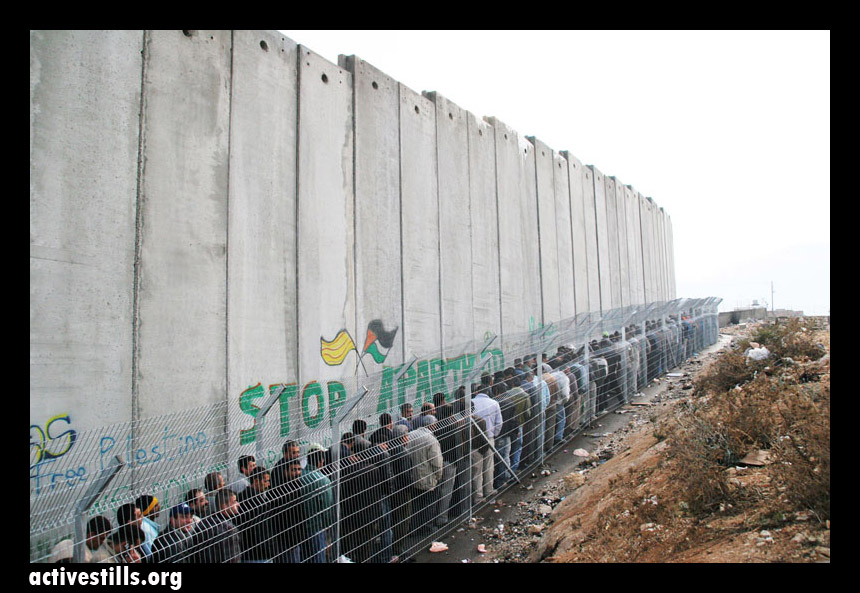The Spark March 2010
Anti-Zionists in Wellington recently ran an exhibition of Israeli photography, entitled From Occupation to Resistance. Featuring work by photography collective ActiveStills, this exhibition highlighted the affect occupation has on Palestinians. Spark journalist Ian Anderson interviewed Kerem Blumberg, an Israeli peace activist and co-runner of this event.
 Spark: How did you have the idea to hold this exhibition?
Spark: How did you have the idea to hold this exhibition?
KB: Well, a lot of the photographers from ActiveStills are friends of mine in Israel. The idea was to show the NZ public images of daily life under occupation in Palestine, alongside resistance by Palestinian, Israeli and international activists.
Spark: Have you had good feedback?
KB: Really good feedback. The photos moved people, and the texts were easy to understand. We raised about $400.
Spark: How did you get involved in peace activism?
KB: I started going to demonstrations in high school, back in Israel. During the first Intifada there were riots throughout the West Bank, Gaza and in Israel. These were severely repressed. As a reaction to the Intifada, Jewish protesters attacked a mosque near my house, throwing stones at it. So I guess it was a time when you had to start figuring out where you stood.
Spark: Who benefits from the occupation?
KB: The Israeli government, employees of the government and army, arms companies everywhere in the world, and companies that invest in the occupation. Also surveillance and security companies, in a big way.
Spark: Do many Israelis get involved in anti-Zionist activism?
KB: Not really. Though people are more likely to get involved at a younger age, because they have to decide whether to join the army.
Spark: Do you ever find there are points of difference or conflict when Israeli and Palestinian activists work together?
KB: Wouldn’t say conflict, but there are differences. People from my background tended to be secular, a lot of anarchists. Whereas we’d be going out to Palestinian villages, where religion and gender divisions were a lot stronger. We’d have to dress modestly in the villages. There were also language barriers; it tended to be only men who talked Hebrew, because the men went to work in Israel.
Spark: Do you face much pressure from the Israeli community in New Zealand?
KB: In New Zealand, I haven’t really come into contact with much of the Israeli community. But in Israel you definitely get harassed.
Spark: Do you have any thoughts on the media coverage here and in Israel?
KB: It’s quite different. A lot of the coverage in New Zealand is very out-of-context. In Israel it’s covered from all directions – there are left-wing journalists such as Amira Hass and Gideon Levy. During wartime though, there’s a lot of censorship in Israel, so people get a very distorted idea of what’s happening.
Spark: What needs to happen, in order to bring peace to Palestine?
KB: Education, particularly anti-racist education. Israelis have to be willing to lose some privilege, and acknowledge everyone’s right to land and freedom.
Spark: And in terms of the state?
KB: In order to achieve peace, the Israeli government would have to be dismantled. Though that’s not going to happen anytime soon.
From Occupation to Resistance showed from February 2nd to 7th in Thistle Hall, Wellington. Look out for future showings in Dunedin and Auckland.

Just another WordPress site